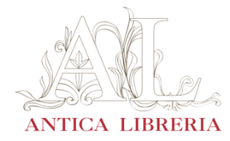Glossario
-
Questo glossario non ha pretesa di essere nè completo nè esaustivo. Vuole solo essere di supporto a chi si accosta per le prime volte al mondo del libro ed ha necessità di tradurre alcuni termini.
Abrasione
Acefalo
Acquaforte (incisone all')
Acquatinta
Agiografia
Anastatica
Anepigrafo
Angolo
Antifonario
Antiporta
Apocrifo
Arrossatura o foxing
Asola
Astuccio
Autografo
Barba o barbe
Bazzana
Bibliografia
Bindella
Brossura o brochure
Bulino
Calcografia
Capitello
Capolettera
Carta
Cartonato
Cerniera
Cinquecentina
Collana
Colophon
Collazione - collazionare
Contrafforte
Cornice
Copyright
Coperta o copertina
Costola o Spigolo
Cromolitografia
Data
Dentelle
Dispensa o fascicolo
Dorso
Esemplare
Estratto
Ex-libris
Facsimile
Fascetta editoriale
Fermaglio
Filigrana
Finalino
Fioritura
Foderare
Foglio di guardia o sguardia
Formato
Fototipia
Fregio
Frontespizio
Gora o alone
Incisione
Incorniciato
Incunabolo
Inedito
Iniziale o capolettera
Interfoliare
Intonso
Legatura
Libello
Litografia
Luogo
Marca tipografica
Marmorizzato
Membranaceo
Miscellanea
Monografia
Occhietto o occhiello
Opera omnia
Nervo
Opuscolo
Paginatura
Palinsesto
Pamphlet
Pelle
Percallina
Pergamena
Piatto o specchio
Piede
Plaquette
Postilla
Privilegio
Pseudonimo
Puntasecca
Recto
Rifilatura
Rilegatura
Risvolto o Bandella
Scompletazione
Segnatura
Silografia o xilografia
Sovracoperta o sopracoperta
Taglio
Tassello
Tavola fuori testo
Testatina
Tomo
Torchio
Unghia
Velina (carta)
Vergella
Verso
Vignetta
